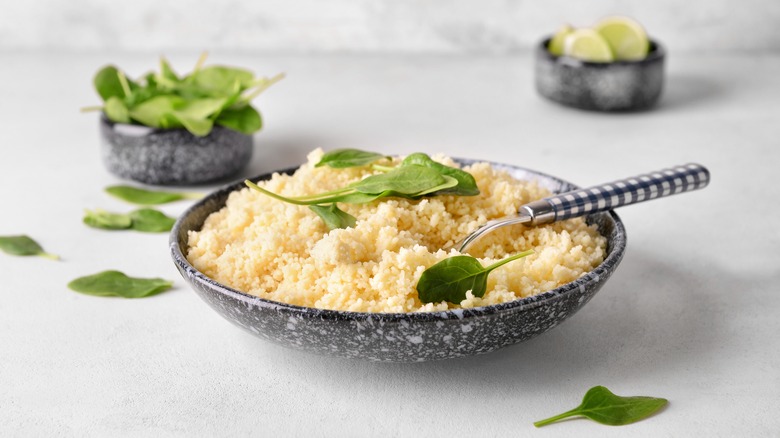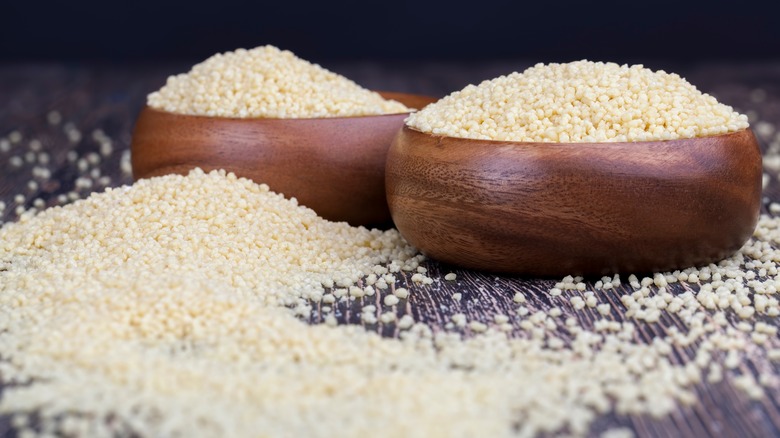Why You Shouldn't Cook Couscous In Boiling Water
Couscous is the perfect answer to one of modern life's biggest questions: What's for dinner? It's a versatile grain that can be served as a side, make the base for a grain salad, or be added with some leftovers to make something old feel new. It can also be seasoned virtually any way imaginable with a variety of spices, herbs, and additions. The most important part is that this grain will cook in about five minutes plus the time to boil water.
Actually, it won't even take that long because, according to Eating Well, you really shouldn't be using boiling water to cook your couscous. They say that you should be using water that is at a simmer and short of boiling.
This is because most couscous that's sold in stores is actually precooked. While most people think of couscous as something similar to rice or quinoa because it absorbs all of its cooking liquid, it's technically a pasta. It's made from ground durum wheat which is the same grain that makes semolina flour. This is the flour most commonly used in crafting pasta because of its high gluten content. When pasta is made it is hydrated, shaped into small spheres, and heated before being cooled again (via How It's Made). By the time it gets to your kitchen, all that's really needed is a quick bath to rehydrate and soften. Of course, don't forget to let it rest.
What is Couscous?
According to WeHalal, couscous was originally invented by the nomadic Berber peoples of North Africa. In "The Legacy of Muslim Spain," author Lucie Bolens says that there is historical evidence of Berbers preparing couscous as far back as second century B.C.E. From the regions of Northwestern Africa where the Berbers lived, the food then spread into the Middle East. Today, it exists as a cultural staple that is enjoyed all over the globe in a variety of different forms.
It comes in a variety of shapes depending on the tradition. According to The Spruce Eats, one of the most common varieties is the Moroccan couscous, which is the smallest. The next is Israeli couscous, or pearl couscous, which is slightly larger and has nutty flavor. Finally, there is the Lebanese, couscous which is even bigger than the Israeli variety. It's sometimes referred to as moghrabieh. All three of these cook differently because of their different sizes, but are all still considered couscous and can be treated similarly.
According to Eating Well, those who are more health-conscious should make sure to purchase whole grain couscous. While it may appear similar to a whole grain itself, couscous is simply a milled form of durum wheat. Not all of it is made with whole grains, and those that are should be labeled appropriately in any local grocery store.

